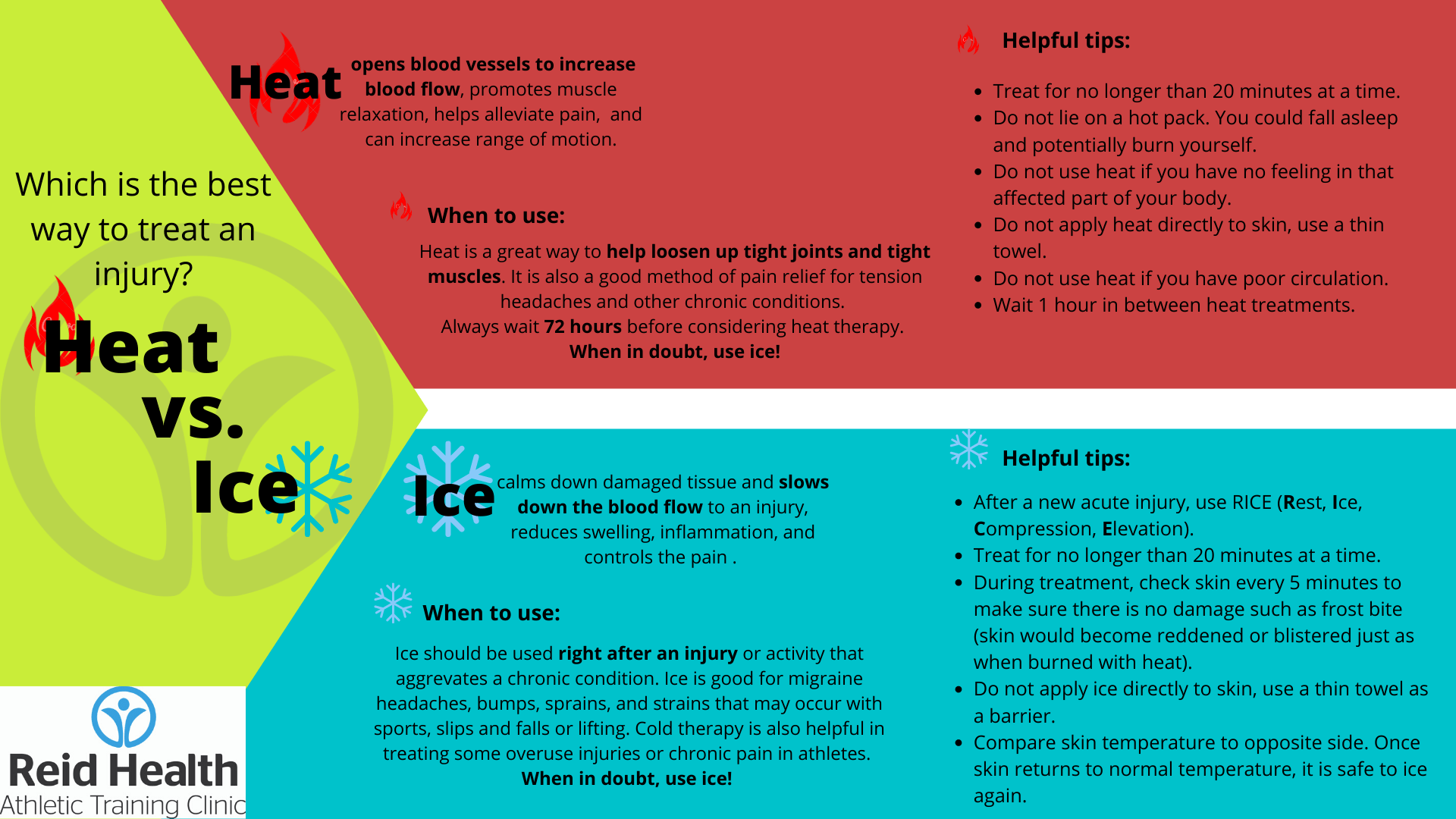
Heat vs. ice to treat injuries
ERICA BARKER
Treating injuries with heat and ice can be
extremely effective for a number of different conditions and injuries, and it
is easily affordable. Heat opens up blood vessels to increase blood flow,
promote muscle relaxation, help alleviate pain, and can increase range of
motion. Ice calms down damaged tissue and slows down the blood flow to an
injury, reduces swelling, inflammation, and controls the pain. The tricky part
is knowing what situations call for heat and which call for ice. Here are some
general rules of thumb to follow when deciding how to treat injuries.
Using heat:

For an injury, heat can help loosen up tight muscles and joints and is a good method of pain relief for tension headaches or other chronic conditions. When using heat, make sure to keep in mind these helpful hints:
●
Do not lie on a hot pack. You
could fall and potentially burn yourself.
●
Do not use heat if you have no
feeling in the affected part of your body.
●
Do not apply heat directly onto
skin, use a thin towel.
●
Do not use heat if you have poor
circulation.
●
Wait 1 hour in between heat
treatments.
Using ice:
Ice should be used immediately after an injury - Medical News Today advises applying it within 48 hours. Ice can also be used for activity that aggravates a chronic condition. Ice is good for migraine headaches, bumps, sprains, and strains that may occur with sports, slips, falls, or lifting. Cold therapy is also helpful in treating some overuse or chronic injuries in athletes. When in doubt, use ice but make sure to keep in mind these helpful hints:
●
Treat for no longer than 20
minutes at a time.
●
During treatments, check skin
every 5 minutes to make sure there is no damage such as frostbite (skin would
become reddened or blistered just as when burned with heat.)
●
Do not apply ice directly onto
skin, use a thin towel as a barrier.
●
Compare skin temperature to the
opposite side. Once the skin returns to normal temperature, it is safe to apply
the ice again.
Knowing when not to apply ice or heat is just as important as knowing when to use them, according to Jesse Tittle, Reid Health Sports Medicine Outreach Manager. Heat can make an inflammation worse - it can also make an injury worse. Ice a cramp or muscle strain and it's likely to contract harder and cause more pain.
If
you have questions about a sports injury or would like to know more, talk to your primary care physician or contact the Reid Health Athletic Training Clinic.


